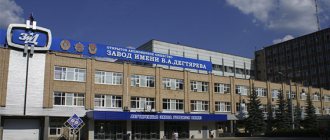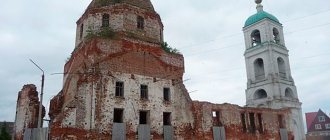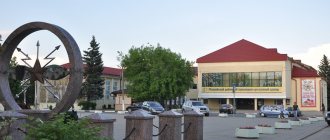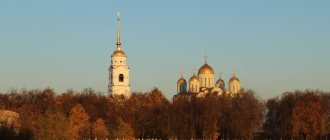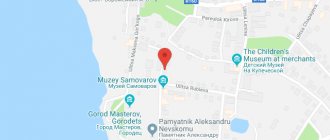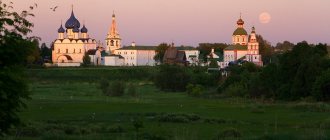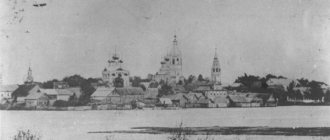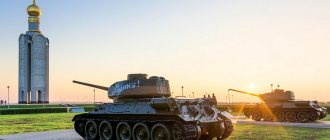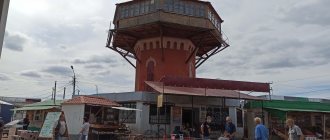Cheremkhovo is a city in the southern part of the Irkutsk region of Russia. It forms the municipal entity “city of Cheremkhovo” and is the administrative center of the Cheremkhovo district (which it is not part of).
Founded in 1772.
First mention: 1772.
City since 1917.
Area: 114.40 km².
Population: 50,154 people (2020).
Agglomeration: Irkutsk-Cheremkhovo.
Nationalities: Russians, Ukrainians, Belarusians, Tatars, Armenians, Buryats.
Confessions: Orthodox, Sunni Muslims, Buddhists, shamanists.
Katoykonym: Cheremkhovotsy, Cheremkhovets, Cheremkhovochanka.
Telephone code: +7 39 546.
Postal codes: 665400 - 665422.
OKATO code: 25 445.
OKTMO code: 25745000001.
Mayor of the city: Vadim Aleksandrovich Semyonov.
Story
Founded in 1772. City since 1917. Before the administrative reform of 2005, Cheremkhovo was a city of regional subordination. In Soviet times, the Cheremkhovo City Executive Committee included the city of Svirsk, which in 2007 became an independent municipal entity at the regional level.
Some events in the history of the city of Cheremkhovo
| Year | Event |
| 1743 | Near the postal route, in an overgrown bird cherry area, a coachman’s hut was erected, which gave rise to the settlement |
| 1770 | Coal deposits were discovered in the vicinity of the settlement |
| 1772 | Cheremkhovo Sloboda (Cheremkhovo) becomes a settlement at the post station on the Moscow highway |
| 1797 | The first wooden church was built (replaced with a stone one after a fire) |
| End of XIX | Coal mining has begun on a small scale |
| 1896 | The first mine was founded |
| 1898 | The Trans-Siberian Railway passed through Cheremkhovo |
| 1905 | There are 89 coal mines in the vicinity of Cheremkhovo |
| 1915 | A petition has been sent to grant Cheremkhovo city status |
| 1916 | Cheremkhovo became the center of Cheremkhovo district (before that it was a volost village of Balagansky district). Cheremkhovo district was formed from the volosts of the disbanded Balagansky district. At the same time, the district Balagansk, remaining aloof from the main route, lost its status as a city |
| 1917 | Cheremkhovo received city status |
| January 1920 | Cheremkhovo warriors took part in escorting the echelon of Admiral A.V. Kolchak with Russia's gold reserves |
| March 1920 | Units of the 5th Army of the Red Army entered the city |
| August 1921 | By resolution of the Irkutsk Provincial Executive Committee, the Cheremkhovo industrial district was formed with the city of Cheremkhovo and the Cheremkhovo volost |
| 1924 | “All-Union Elder” M.I. comes to the city. Kalinin. He visits an engineering plant and speaks to the workers |
| Early 1930s | Coal production has reached pre-revolutionary levels |
| 1932 | A new thermal power plant was put into operation (now it is CHPP-12) |
| 1939 | The Khramtsovsky open-pit mine was put into operation |
| 1964 | The All-Union Meeting on the development of open-pit mining of coal deposits in the USSR is being held in Cheremkhovo |
| 1965 | The Safronovsky open-pit mine was put into operation |
| 1970 | A diorama of the Safronovsky section is demonstrated at the World Exhibition EXPO-70 in Osaka (Japan) |
| 1990s | A crisis. City-forming enterprises are closing. Unemployment is rising. City communications are deteriorating. The standard of living of the local population is declining |
| Early 2000s | The city is recognized as unpromising |
| 2006 | Vadim Aleksandrovich Semyonov was elected mayor of the city of Cheremkhovo. His team began systematic work to revive the city |
- Cheremkhovo // “Historical Encyclopedia of Siberia” (2009)
- Cheremkhovo. Formation of the village // Kovalskaya T.V. “Journalistic sketches for the 90th anniversary of the city” (2007)
- Cheremkhovo. Transformation of a village into a city // Kovalskaya T.V. “Journalistic sketches for the 90th anniversary of the city” (2007)
- Cheremkhovo. Life of migrants // Kovalskaya T.V. “Journalistic sketches for the 90th anniversary of the city” (2007)
- Cheremkhovo. Memoirs of Kalashnikov V. M. // Kovalskaya T. V. “Journalistic sketches for the 90th anniversary of the city” (2007)
- Cheremkhovo in the pre-war years // Kovalskaya T.V. “Journalistic sketches for the 90th anniversary of the city” (2007)
- Cheremkhovo. Development of coal mining in the post-war years // Kovalskaya T.V. “Journalistic sketches for the 90th anniversary of the city” (2007)
- Cheremkhovo in the 20th century // Kovalskaya T.V. “Journalistic sketches for the 90th anniversary of the city” (2007)
- Cheremkhovo. Development prospects // Kovalskaya T.V. “Journalistic sketches for the 90th anniversary of the city” (2007)
Cheremkhovo: a city of coal miners
Half a century ago, Cheremkhovo was considered one of the most successful cities in the Irkutsk region, and during the heyday of the coal industry, Cherembass thundered throughout the country.
View this post on Instagram
Posted by V Cheremkhovo (@vcheremhovo)
Cheremkhovo was first mentioned in 1743 “by decree of the Irkutsk chancellery, he, Kabakov, was registered at the Cheremkhovo camp as a coachman.” Now this date is considered the date of foundation of the village at the post station on the Moscow highway, 123 versts from Irkutsk. The name of the village was given by the nearby river Cheremshanka, which received its name because of the large number of bird cherry trees along the banks. In 2012, the figure of coachman Stepan Kabakov in a heavy sheepskin coat, high boots with a bird cherry branch in one hand and a wheel in the other was installed on a pedestal on Pervomaiskaya Street (formerly Bolshoi Street).
Once upon a time, landowner peasants were sent to Siberia at the expense of recruits to settle, some of them stayed in villages along the roads. Thus, Cheremkhovo was destined to become a tract village. In the 18th century it was called Cheremkhovskaya Sloboda, later - the village of Cheremkhovskoye. In 1772, a postal station appeared here, and inns began to be built next to it along the highway. At that time the population was only 250-300 people.
View this post on Instagram
Publication from V Cheremkhovo (@vcheremhovo)
In 1788, a church was built in the village, consecrated in the name of St. Nicholas the Wonderworker, the patron saint of agriculture and trade. Prosperous peasants began to settle around the church. The population grew due to newcomers. Here you could see artisans and blacksmiths, stove makers and tailors. Others sowed grain and developed trade. Cheremkhovo volost became part of Balagansky district. The volost village was supposed to have a transit point. Decembrists Pyotr Gromnitsky and Ivan Annenkov (1835), participants in the Warsaw Uprising of 1863, and later other political exiles stopped here on the way to their places of settlement. Already in 1862, according to the statements of the Nicholas Church, in the Cheremkhovo village there were 382 households, 2539 inhabitants, including 782 settlers. It is known that from the second half of the 19th century there was a parish school in the village, where Grigory Bazhenov taught; in 1881 it was divided into male and female.
In the 19th century, coal was discovered here, and life in the village quickly changed. Clear information that there are coal deposits near Cheremkhovo is recorded in the reports of geologists Alexander Chekanovsky and Ivan Chersky, who in 1868-1871 carried out geological research through the VSOIRGO. Later, Obruchev and Karl Bogdanovich, studying the strip of the Trans-Siberian Railway under construction, confirmed that the “hot stone,” as local residents called it, would develop the territory. Already in 1895, the first two mines were opened in Cheremkhovo, but the engineer Sheintsvit did not recognize the coal as suitable. A year later, mining technician Vladislav Tsentnerovich opened four mines, beginning industrial coal mining. By 1906, production increased to 61.1 million poods, 1907 - 76.8 million poods. The coal was of very high quality, but due to the difficult economic situation, there were few buyer crises, and in the early 1910s the mines were operating at half their capacity.
View this post on Instagram
Publication from V Cheremkhovo (@vcheremhovo)
The development of the Trans-Siberian Railway and coal production brought a large number of workers here. Trade grew, houses were built, peasants rented out rooms to employees, and new villages appeared. By 1906, nearly 8,000 people worked in 89 mines. The village of Cheremkhovo turned into a large industrial center of the Irkutsk province. 1.5% of the country’s total coal was mined here, and the Cheremkhovo mines provided fuel to Irkutsk, a section of the Trans-Baikal Railway and nearby settlements.
The assignment of the status of the city of Cheremkhovo (June 3 (16), 1917) fell into the historical fork of global events: the application was sent to the tsarist authorities, the city status was signed by Prince Georgy Lvov, and the first city elections, held in November 1917, were already elections to the workers’ council, soldiers' and peasants' deputies of the new, Soviet Russia. The city council was headed by anarcho-syndicalist Alexander Buyskikh.
View this post on Instagram
Publication from V Cheremkhovo (@vcheremhovo)
A new milestone in the development of the city was 1927, when two turbogenerators of the new Cherembasstrest power plant were launched in Cheremkhovo and small mine power plants were closed along with steam lifts. Cutting machines, conveyors, and electric hammer drills also came from the USA. For the construction of new mines, a special office “Shakhtostroy” was created, and designs for new mines were prepared by the “Vostuglya” Giproshakht with the participation of American engineers. This is how the largest mine named after them appeared. Kirov (1934), a little earlier they built mine No. 7 (1929), mines No. 5, “Maly Artem” No. 8, 10-16. The city developed, a water supply system was built here and the problem of water shortage was partially solved. Cherembasstrest teams also built social facilities - school No. 1 on the square in the Andreevsky village (1934), a clinic (1938) and a library (1939).
Since 1947, a professional holiday was celebrated in Cheremkhovo for the first time - Miner's Day. So, in 1956, the city’s population was 124 thousand people, and in terms of population it almost entered the hundred cities of the USSR, ranking second in the Irkutsk region
.
View this post on Instagram
Publication from V Cheremkhovo (@vcheremhovo)
However, in the 1980s, Cheremkhovo began to lose its former glory. This was due to the development of new cities - Bratsk, Angarsk, Ust-Ilimsk. In post-Soviet times, the city went through difficult times. This is due to the general state of the economy and the crisis of the coal industry as a whole. The city tried, on the one hand, to preserve jobs, and on the other, to find new points for the development of the territory. An outflow of residents began, and mortality increased.
View this post on Instagram
Publication from V Cheremkhovo (@vcheremhovo)
In the 2000s, life in the city recovered a little. In 2013, grateful descendants erected a monument in the city to the bright and famous mine owner and philanthropist Pyotr Shchelkunov, and in 2015 - a memorial plaque to the Irkutsk architect and Cheremkhovo mine owner Vladimir Rassushin, whose mines were widely known far beyond the region until the mid-twenties of the last century.
Cheremkhovo is lucky with its cultural component. Since to the city according to Art. 58 of the Criminal Code of the RSFSR included several famous Moscow artists, then in 1939 a theater was opened here, which today is the only provincial theater of regional subordination. During the Great Patriotic War, artists from the Moscow Theater were evacuated to Cheremkhovo. Maria Ermolova. Now the theater is named after Vladimir Gurkin, a famous director whose film “Love and Doves” is based on the play the whole country knows. The famous playwright Alexander Vampilov came from Cheremkhovo (there was never a maternity hospital in Kutulik), Mikhail Varfolomeev lived and worked here. Since 2014, the interregional festival of provincial theaters “Theater Province” has been held.
View this post on Instagram
Publication from V Cheremkhovo (@vcheremhovo)
Author: historian, journalist A.V. Petrov.
All the most interesting things are on our social networks!
Geography
The city is located on the hilly heights of the Irkutsk-Cheremkhovo Plain, on the small Cheremshanka River, about 20 km west of the Angara River, at an altitude of 550 m above sea level. In the vicinity of Cheremkhovo there are areas of coal mines (mined and active), agricultural and forest lands. Within the city limits you can find waste heaps - traces of former coal mining.
The municipal formation “city of Cheremkhovo” is a small settlement agglomeration, including a central residential area and a dozen separate settlements-microdistricts, formed at various enterprises, mines, quarries and open-pit mines, many of which were subsequently closed. These villages are 4-12 km away from the city center. The villages are mostly one-story with wooden individual buildings and barrack-type houses.
The central part of Cheremkhovo stretches along the Trans-Siberian Railway for almost 12 km, built up with both wooden one-story and stone multi-story comfortable houses. There are several wide beautiful avenues, a spacious station square, a large stadium and a cozy recreation park.
Cheremkhovo on the map of Russia: geography, nature and climate
The city is located 131 km from Irkutsk, on the Cheremshanka River , in honor of which it received its current name. The total area of Cheremkhovo is about 114 square kilometers. Rich coal deposits are due to the fact that the city is located in the southern part of the Irkutsk-Cheremkhovo Plain .
The climate of the territory is sharply continental, which is expressed by a large temperature range and low precipitation. The coldest month is January (average temperature –20°С), the warmest month is June (+20°С).
Mostly birch and coniferous trees grow in the forests. A satellite map of Cheremkhovo proves that the city has green park areas.
Fossil resources
In the vicinity of the city there is the Cheremkhovo coal deposit, the industrial development of which has been carried out since the end of the 20th century. The coal seams here lie relatively shallow and have been mined only by opencast mining for the last 30 years. Coal mines are moved to new areas as fields are mined. Local coal is of the fatty, long-flame type. Its reserves are estimated at approximately 60-100 million tons, which will allow the current level of coal production not to be reduced for at least 20 years.
North of Cheremkhovo, not far from the already operating open-pit mines, there is the Golovinskoye coal deposit with balance reserves of 190 million tons. The quality of Golovinskoye coal is approximately the same as Cheremkhovo coal. The annual volume of coal production here can reach 3 million tons.
In the vicinity of Cheremkhovo there are also reserves of raw materials suitable for the production of building materials. In particular, 12 and 18 km southeast of the city, the Cheremkhovskoye and Makaryevskoye dolomite deposits are located, respectively (from which rubble stone, crushed stone, building lime, etc. are obtained).
On the northwestern outskirts of the city there is a deposit of brick-ceramic raw materials with balance reserves of more than 1 million tons; it was exploited by a building materials plant.
Main streets of Cheremkhovo
A map of Cheremkhovo with streets allows you to get the following information:
- Lenin Street is one of the central streets of the city. It is a continuation of Pervomaiskaya Street and ends directly at the exit from the city. There are many important organizations (Pension Fund, Prosecutor's Office, Ministry of Internal Affairs), shops, trade, as well as educational institutions (Secondary School, Vocational School, Mining Technical College, etc.) located here. The street also crosses the Central City Park.
- Plekhanov Street runs from Pervomaiskaya Street almost to the Station Square of the city. A map of Cheremkhovo with houses says that there are enough residential buildings, as well as shops and retail outlets. There are also two kindergartens on Plekhanov Street.
- Mayakovsky Street is one of the longest in the city. It starts from Elena Berdnikova Street and ends at Oktyabrsky Proezd. In addition to residential high-rise buildings, there are schools, a kindergarten, several gas stations, shops, and a skin and venereal disease clinic.
Transport accessibility
The Trans-Siberian Railway passes through Cheremkhovo. Within the city limits there are three ESR railway stations (Cheremkhovo, Grishevo and Kasyanovka) and two stopping points. In addition, railway lines and access roads are laid to large coal mines and some industrial enterprises.
The city is connected by several asphalt roads to the federal highway M53 “Baikal” (Novosibirsk - Irkutsk), which runs 8–9 km northeast of the residential area. There are dirt roads connecting Cheremkhovo with coal mine sites and nearby villages in the Cheremkhovo district.
Distance from Cheremkhovo to some cities, km
| City | Distance | |
| by rail | by road | |
| Usolye-Sibirskoye | 63 | 73 |
| Angarsk | 91 | 104 |
| Winter | 120 | 117 |
| Irkutsk | 130 | 148 |
| Slyudyanka | 256 | 260 |
| Tulun | 259 | 250 |
| Baykalsk | 291 | 299 |
| Nizhneudinsk | 376 | 373 |
| Alzamay | 468 | 463 |
| Taishet | 539 | 530 |
| Biryusinsk | 552 | 543 |
| Ulan-Ude | 586 | 598 |
| Vikhorevka | 808 | 454 |
| Bratsk | 832* | 475 |
| Krasnoyarsk | 957 | 899 |
| Zheleznogorsk-Ilimsky | 1094 | 736 |
| Ust-Kut | 1261** | 844 |
| Ust-Ilimsk | 1329 | 735 |
* To Anzebi station.
** To Lena station.
In addition, Cheremkhovo is connected by road and railway line to the neighboring town of Svirsk.
The total length of the road network within the city municipality exceeds 500 km.
Population
Population dynamics by year3
| 1897 | 1926 | 1931 | 1939 | 1956 | 1959 | 1962 | 1967 | 1970 | 1973 | 1976 |
| 2000 | 14 500 | 12 900 | 55 600 | 124 000 | 122 833 | 119 000 | 109 000 | 98 667 | 93 000 | 82 000 |
| 1979 | 1982 | 1986 | 1987 | 1989 | 1992 | 1996 | 1998 | 2000 | 2001 | 2002 |
| 76 696 | 74 000 | 73 000 | 73 000 | 73 636 | 73 500 | 71 900 | 70 500 | 69 100 | 67 800 | 60 107 |
| 2003 | 2005 | 2006 | 2007 | 2008 | 2009 | 2010 | 2011 | 2012 | 2013 | 2014 |
| 60 100 | 57 000 | 55 600 | 54 800 | 54 300 | 53 892 | 52 647 | 52 605 | 52 040 | 51 597 | 51 324 |
| 2015 | 2016 | 2017 | 2018 | 2019 | 2020 | |||||
| 51 373 | 51 338 | 51 230 | 50 819 | 50 586 | 50 154 |
Map
| Cheremkhovo: maps |
Cheremkhovo: photo from space (Google Maps) Cheremkhovo: photo from space (Microsoft Virtual Earth)
| Cheremkhovo. Nearest cities. Distances in km. on the map (in brackets along roads) + direction. Using the hyperlink in the distance , you can get the route (information courtesy of the AutoTransInfo website) | |||
| 1 | Svirsk | 20 (22) | SE |
| 2 | Mikhailovka | 25 () | SE |
| 3 | Kutulik | 29 (30) | NW |
| 4 | Mishelevka | 33 () | YU |
| 5 | Taiturka | 40 (85) | SE |
| 6 | Bohan | 47 (257) | IN |
| 7 | Belorechensky | 48 () | SE |
| 8 | Zalari | 58 (61) | NW |
| 9 | Wasp | 59 (283) | NE |
| 10 | Usolye-Sibirskoye | 59 (68) | SE |
| 11 | Novonukutsky | 65 (81) | WITH |
| 12 | Thelma | 67 () | SE |
| 13 | Angarsk | 87 (97) | SE |
| 14 | Balagansk | 95 (137) | WITH |
| 15 | Meget | 105 () | SE |
| 16 | Winter | 108 (115) | NW |
| 17 | Ust-Uda | 113 (145) | WITH |
| 18 | Khomutovo | 117 (165) | SE |
| 19 | Ust-Ordynsky | 119 (202) | IN |
a brief description of
The city is located on the Irkutsk-Cheremkhovo Plain, 130 km northwest of Irkutsk. Railway station. Road junction.
Territory (sq. km): 114
Information about the city of Cheremkhovo on the Russian Wikipedia site
Historical sketch
Founded in 1772 as the village of Cheremkhovo at the postal station on the Moscow highway. Name by location on the river. Cheremkhovka (Cheremshana), so named because of the abundance of bird cherry bushes.
Until the end of the 19th century. The coal deposits of the Irkutsk (Cheremkhovo) basin were little explored and were not developed. The first mine was founded in 1896, coal was sent by barges along the Angara to the Nikolaev ironworks. In connection with the construction of the Trans-Siberian railway. Along the highway, the number of small mines with workers' settlements near them quickly grew (by 1906 there were 89 of them).
The city of Cheremkhovo since 1917
Economy
Cheremkhovo is one of the centers of coal mining in the Irkutsk basin, which is carried out using the open pit method (2 coal mines, 3 washing plants).
Factories: heavy engineering, mechanical, “Radio equipment”, “Khimik”, cardboard and roofing felt. Factories: furniture, nonwoven materials. Enterprises for the production of building materials.
Food industry: soft drink plant, meat processing plant, bakery. Light industry: hosiery and clothing factories.
In the Cheremkhovo region, wheat, oats, barley, and buckwheat are grown. Cattle are raised (dairy).
Deposits of coal, talc, dolomite, clay, magnesite.
Main enterprises
FERROUS METALLURGY
OJSC "East Siberian Refractory Plant"
665448, Irkutsk region, Cheremkhovo district, Mikhailovka village,
Offers:
refractory products, building bricks
Culture, science, education
Branch of Irkutsk University.
Drama Theater.
Architecture, sights
The city consists of individual mining villages stretching for more than 10 km. In the city center there is a compact development of brick and large-panel houses. The city is surrounded on all sides by waste heaps, deep quarries and waste rock dumps.
In the Cheremkhovo district, in the village of Golumet, there is St. Nicholas Church.
| Population by year (thousands of inhabitants) | |||||||
| 1897 | 2.0 | 1976 | 82 | 2003 | 60.1 | 2015 | 51.4 |
| 1926 | 14.5 | 1979 | 76.7 | 2005 | 57.0 | 2016 | 51.3 |
| 1931 | 12.9 | 1982 | 74 | 2006 | 55.6 | 2017 | 51.2 |
| 1939 | 65.6 | 1986 | 73 | 2007 | 54.8 | 2018 | 50.8 |
| 1956 | 124 | 1989 | 73.6 | 2008 | 54.3 | 2019 | 50.6 |
| 1959 | 122.8 | 1992 | 73.5 | 2010 | 53.6 | 2020 | 50.2 |
| 1962 | 119 | 1996 | 71.9 | 2011 | 52.6 | 2021 | 49.9 |
| 1967 | 109 | 1998 | 70.5 | 2012 | 52.0 | ||
| 1970 | 98.7 | 2000 | 69.1 | 2013 | 51.6 | ||
| 1973 | 93 | 2001 | 67.8 | 2014 | 51.3 | ||
Economy
As of 2022, the city’s economy is represented by mining (76% of industrial production); production of other non-metallic mineral products; machinery and equipment; furniture; food products; production and distribution of electricity, gas and water; enterprises of transport and communications, construction, consumer market of goods and services:
Industry
• mining (coal) - branch of Razrez "Cheremkhovugol" (LLC "KVSU"); • production of rubber and plastic products - branch of Penoplex SPb LLC in Cheremkhovo; • production of other non-metallic mineral products - Cheremkhovo Construction Materials Plant LLC; • production of machinery and equipment - OOO Rudoremontny Zavod, car repair enterprise Cheremkhovo - a branch of OOO Transvagonmash; • production of finished metal products - Metkonstruktsiya LLC; • food production: Siberian Baker LLC, Chocolate Paradise+ LLC; • provision of electrical energy, gas and steam; air conditioning - CHPP-12 of PJSC "Irkutskenergo", branch "Cheremkhovo Electric Networks" of OGUEP "Oblkommunenergo", MUP "Teploservis", LLC "Cheremkhovo Vodokanal".
CHPP-12 is one of the oldest thermal stations in the Irkutsk region. It was designed and built in the early 1930s with the aim of replacing a small pre-revolutionary station, the power of which was no longer sufficient to supply electricity and heat to the city and its industrial enterprises that were rapidly developing in those years. The station was put into operation in 1932 (at that time its installed capacity was 5.5 MW). Ten years later, in 1942, the power of the thermal power plant was increased to 9 MW. In the post-war years, several power trains were placed near the station and the total electrical power was increased to 24 MW. After the launch of the Irkutsk and Bratsk hydroelectric power stations, the city was connected to the unified energy system of Siberia, and the need to increase the electrical capacity of the thermal power plant disappeared. In 1963, the station was transferred to Irkutskenergo (before that it was in the system of the USSR Ministry of Coal Industry), after which it was modernized several times. Currently, the electric power of the thermal power plant is 7.5 MW, and the thermal capacity is 230 Gcal per hour. The fuel used is mainly Cheremkhovo coal mined at nearby open-pit mines (thermal power plants can also use Azey and Mugun brown coals supplied from Tulun open-pit mines).
Transport and communications
• Structural divisions of VSZD - a branch of JSC Russian Railways, MUP "Passenger Transportation";
• Cheremkhovo post office of the Office of the Federal Postal Service of the Irkutsk Region - a branch of the Federal State Unitary Enterprise "Russian Post";
• Branch of PJSC Rostelecom.
For the reception and departure of freight trains at the Cheremkhovo railway station there are nine reception and departure tracks. Capacity - 60 pairs of trains per day, carrying capacity - about 186 thousand tons per day. There are four tracks for the reception and departure of passenger and commuter trains, there are two island landing platforms, a platform and an underground tunnel1.
Construction
As of 2022, the construction industry is represented by the following enterprises: LLC Energia, LLC SMU Cheremkhovskoye, LLC Cheremkhovpromzhilstroy, LLC Cheremkhovspetsstroy, LLC Region 381.
Archival data: the share of various industries in the economy of Cheremkhovo on average for the period 2000-2009, %
| Industry | Share |
| Industry | 48,6 |
| Coal mining | 38,4 |
| Transport and communications | 32,1 |
| Trade | 6,1 |
| Construction | 2,9 |
| Others | 10,3 |
| Total | 100,00 |
Visiting neighbors: Cheremkhovo
Daniil Konin
All posts
The “Your Plus” portal has started an entertaining and wonderful series of guide articles called “Visiting the Neighbors,” in which different authors talk about different cities of the Irkutsk region. And it just so happened that it was my fate to tell about Cheremkhovo, a resident of Irkutsk by place of residence, but a resident of Cheremkhovo by origin.
If Angarsk used to be called the “cultural capital of the Baikal region” (I don’t know how this is now, it’s better to ask the Angarsk residents themselves), then Cheremkhovo has long secured its fame as the main center of coal mining in the Irkutsk region and one of the largest in Siberia in in general. The first mention of Cheremkhovo was recorded almost three hundred years ago (1743). It was then that the first coachman's hut and milepost (it can be seen on the flag and coat of arms of the city) along the postal route were erected here. Over time, rich reserves of coal were discovered in this area. With the advent of the Trans-Siberian Railway, the need for fuel increased on sections of the route, of which there was more than enough in the Cheremkhovo area. Workers' settlements appeared around the mines, growing, enlarging, and connecting. In 1915, the village of Cheremkhovo became the center of the Cheremkhovo district (until that time it was part of the Balagan district), and two years later Cheremkhovo acquired the status of a city.
In 2022, Cheremkhovo will celebrate the centenary of acquiring city status
Today Cheremkhovo is one of the largest cities in the Irkutsk region (as of 2016 - 6th in terms of population) with a rich history. It is in the current 2022 that the city will celebrate the centenary of acquiring this status, and preparations for this have been going on for a long time (City Day will traditionally be celebrated on the last Saturday and Sunday of August, in accordance with Miner’s Day - and this is another reason to come here).
Of course, no one conducts excursions around the city as such, but it’s a big mistake to think that we have nothing. We have a lot to see, and now I’ll try to tell you about it.
Cheremkhovo is a city of monuments...
There are a lot of them in the city - more than thirty pieces, for different tastes, from different materials and in different areas of the city. The “monumental boom” in Cheremkhovo began relatively recently with the coming to power of the current mayor, Vadim Semenov, who set out to transform the appearance of the city. Thus, many monuments appeared in the city, the first of which was the monument to miners near the Cheremkhovo Drama Theater - the calling card of the city. Where: Lenina, 25.
A little to the side of it is a sculpture of three playwrights whose life and work were connected with the city - Alexander Vampilov, Mikhail Vorfolomeev and Vladimir Gurkin. Surely everyone, if not read, then definitely heard about such plays as “The Eldest Son”, “Last Summer in Chulimsk”, “Wormwood - Bitter Grass”, “Love and Doves”... Subsequently, they formed the basis of films, the comedy “Love and Pigeons,” shot by the famous director Vladimir Menshov in collaboration with Gurkin, has become almost a classic of Soviet cinema.
Where: same place, Lenina, 25.
Vladimir Menshov, Vera Alentova and the mayor of Cheremkhovo Vadim Semenov at the monument “Love and Doves”. Cheremkhovo. October 2012. Photo by: Elena Gorbunova. Photo: ru.wikipedia.org
When Vladimir Menshov was choosing “location” for filming the film, he and Gurkin traveled through many villages and towns along the Trans-Siberian Railway. He was amazed at the devastation he saw and said: “If we film here, people won’t believe that it’s possible to live like this. It’s like 1914!”, so the city of Medvezhyegorsk in Karelia was chosen as the “location”.
We will not go far from Gurkin and the pigeons, both literally and figuratively. A five-minute walk along Lenin Street from the Drama Theater to the intersection with Ferenc Pataky Street - and now we find ourselves in a small and cozy public garden, which bears the name of the famous play, and in the center of it is a sculptural composition depicting a scene from the film.
Where: intersection of Lenin and Ferenc Patak streets.
Pushkin from Cheremkhovo is on the left in the photo. On the right is his Moscow “twin brother”
There are currently no other “full-size” monuments dedicated to Pushkin in the Baikal region
There is also such a monument in Cheremkhovo, which in the Irkutsk region, as they say, special one (special) - this is a monument to Alexander Sergeevich Pushkin , located almost at the threshold of school No. 8 named after A. S. Pushkin. Unfortunately, the name of the author of the sculpture has not been preserved in history, but among local historians there is a legend that its creator could have been one of the actors of the Tairov Theater troupe on Malaya Bronnaya, who in the 1930s was exiled to the village of Shadrinka on the outskirts of Cheremkhovo: there Siblag was located.
“Cheremkhovo” Pushkin is very reminiscent of Pushkin, who is now located on the square named after himself in the capital of our Motherland (in the photo, Pushkin from Cheremkhovo is on the left). As far as I know, there are currently no other “full-size” monuments dedicated to the great Russian poet in the Baikal region.
Where: Lenina, 19.
There are no analogues in the region to the Cheremkhovo monument to border guards , which is located in the Khramtsovka microdistrict. The sculptural composition includes the figure of a border guard, the prototype of which was the legendary Nikita Karatsupa, Hero of the Soviet Union. The service dog Ingus is also depicted in stone at the feet of the border guard. The figure of a fighter with a dog is located at the border pillar - a symbol of the border of our Motherland.
Where: Shevchenko, 2, turn to Khramtsovka.
Perhaps the best place to play toy soldiers is the bust of General Margelov
The only one in the region could be a bust of Vasily Filippovich Margelov , army general, Hero of the Soviet Union and commander of the Airborne Forces. The mayor of Cheremkhovo had long been nurturing plans to place such a monument, but it eventually appeared at the same time as a similar structure in Angarsk. In Cheremkhovo, the bust was installed on the territory of the Open Air Museum of Military Equipment, which is located on Ferenc Pataky Street near the Gornyak Palace of Culture, the city administration and the Love and Doves park. So, if you really want, you can saddle up on the BTR-80 located there and loudly shout something like “Margelov is cool,” and passers-by will smile at you.
Where: Ferenc Pataky, 1, behind the building of the Gornyak cultural center.
...and memorials
There are also more than enough memorial complexes in Cherembass. The largest (and most famous) of all is the “Glory to the Heroes!” memorial. , dedicated to the memory of Cheremkhovo residents who did not return from the fronts of the Great Patriotic War. The city military registration and enlistment office called up 24,960 people, 2,856 of them women, to defend the Motherland. About five thousand died on the battlefields (570 women). The names of Cheremkhovo residents who did not return are engraved on massive granite boards. Here I will allow myself to say that one of them bears the name of my ancestor (my grandmother’s brother) - Alexander Semyonovich Shlyakhtin, who in 1943 was awarded the medal “For Courage”.
If one of your Cheremkhovo friends calls you “to the tank,” it means that he is calling you here. The memorial received this name thanks to the T-34 “Cheremkhovo Miner” tank, which was located in the very center of the square on a pedestal. Once upon a time, judging by the stories of older people, it was even possible to climb inside this tank, but now it is welded tightly. This place is one of the favorites of the townspeople: it is very beautiful, there are many benches, there is an opportunity to walk under the treetops and read about the Cheremkhovo people who fought on the battlefields. There is also a fountain here, so on hot summer days there are a lot of kids here.
Where: Nekrasova, 1.
History buffs will be interested in another memorial complex, which is located not far from the station - a monument to fighters for the revolution, in common parlance - a “mass grave”. It is interesting because it is the first monument in the city. It was installed in 1921 at the burial site of miners and Red Guards who died in battles for Soviet power during the uprising against the power of Admiral Kolchak.
Where: intersection of Gorky and December Events streets, public transport stop “Vokzal”.
We need to get educated! In our hospitable city, all conditions have been created for people of different professions and social statuses to join Melpomene, who, as you know, was a muse.
Cheremkhovo Drama Theater named after V. P. Gurkin
Cheremkhovo Drama Theater is the second “oldest” after the Irkutsk Theater. N. P. Okhlopkova
I certainly can’t call myself a true connoisseur of theatrical art, but even I often try to get here during the season. The repertoire is extensive, you can view it here. In addition, the acting troupe of the Cheremkhovo Drama Theater regularly goes on tour to the cities and towns of the Irkutsk region, and also takes part in various festivals throughout Russia. For example, most recently the Cheremkhovo group took third place at the second regional competition of theater groups “Polyus. Golden Season”, which took place in Magadan, and now the troupe is preparing to participate in the international theater festival of modern drama “Kolyada-Plays” in Yekaterinburg.
The Cheremkhovo Drama Theater is also the venue for the interregional theater festival of provincial theaters “Theater Province”, which brings together groups from Tomsk to Neryungri. By the way, Vladimir Menshov came to the first festival, held in 2014, as a member of the jury, about whom a few words were said just above.
You can come here not only to some performance. Here they will happily tell and show you everything related to the history of the development of theatrical art in Cheremkhovo and the region, and they will not ignore the person of Vladimir Pavlovich Gurkin. Well, after such an “excursion” you will be able to eat in the cafeteria, and it will be nourishing, tasty and quite inexpensive (which is important for students at all times and in all situations).
Where: Lenina, 25.
Museum of the History of Cherembass
The Museum of the History of the Coal Industry (that was the name it previously bore) was opened in 1969, but did not have its own premises. The exhibition was located either in a residential building, where it was regularly flooded by residents from the upper floors, or in a municipal building in need of repair. From the eighties of the last century until 2013, the museum exhibits were located in the building of the Cheremkhovo Drama Theater named after V.P. Gurkin. But on the 270th anniversary of the settlement, the museum finally moved to a specially built wooden mansion next to the city Palace of Culture "Gornyak" and the mayor's office.
The museum's collections contain more than 10,000 exhibits. The museum displays household items of the city's inhabitants of the late 19th and early 20th years: a barometer with a hundred-year history (it still works, which is surprising), cast iron irons, a gramophone and many other items. In addition, an impressive collection of Russian money from 1895 to the present day is presented. Have you probably heard the expression about “long ruble”? So, its roots go back to the beginning of the 20th century, when banknotes were very large and long, hence the catchphrase. Here you can also see a real astronaut suit, food in tubes and other “space” things donated to the museum by cosmonaut and Cheremkhovo native Alexander Poleshchuk.
There is nothing to say about fossil finds - bones and tusks of a mammoth, a stone with an imprint of a fern from the Middle Jurassic period, and so on. There was plenty of such “good” in the coal mines. In short, there is a lot to see in the museum.
Where: Ferenc Pataky, 1/B.
Palace of Culture named after Maxim Gorky
Geographically, the Gorky Palace of Culture is located at a fairly respectful distance from the city center (if the phrase “respectful distance” is generally applicable for Cheremkhovo), namely in the Khramtsovka microdistrict. The building was built in the late fifties of the last century, but once inside, it’s easy to think that you were in a mansion built in the 19th century. Spacious halls, figured stucco moldings, crystal chandeliers, lighting... It is not surprising that various thematic events such as balls are periodically organized here.
I also like not only the interior decor here, but also the area in front of the palace. It is very spacious here, there is something like an alley where you can leisurely stroll in warm weather and have small talk, looking at Maxim Gorky confidently looking into the distance. It was on the basis of this palace of culture that the first cinema hall in the city was opened, which received a simple and unpretentious name - “Maxim”. It seats 200 people and is equipped with soft, comfortable chairs. Its opening at one time created an unprecedented sensation in the city - after all, here you could watch “Avatar” in 3D! Now, in 2022, it even sounds somewhat naive, but then, in 2009, it was really cool and unusual. Screenings of the cinema hall can be seen on the website.
Where: Dudarsky, 25.
Park of Culture and Recreation
When I find myself here, it always bothers me that there was no such park when I was a child. Or rather, he was, but not at all like that. Back then there were such ancient and scary rides that threatened to fall apart immediately upon launch.
Fortunately, a lot has changed. If not to say that almost everything. The Ferris wheel disappeared (it was really creepy), but they updated and added many other attractions that will appeal not only to children, but also to adults.
In general, PKiO is a separate reason for pride among Cheremkhovo residents. I swear, people from Usolye-Sibirsky and Angarsk asked me more than once or twice to find out the prices for ride rentals and the park’s operating hours, and those who did come here were satisfied. In the end, here you can not only have fun for a relatively cheap price (the maximum price is 100 rubles for renting a “Biorobot”) and overeat with all sorts of sweets (there are more than enough different cafes here), but also just take a walk, because the park area is located in a forest area .
And from the park you can get to the Shakhtar stadium for the regional football championship match . To do this, it is enough to climb over a small fence, but “Your Plus” persistently does not recommend doing this, but suggests leaving the park through the main entrance, walking a hundred meters to the right and buying an entrance ticket to the match, which costs only 50 rubles.
Where: opposite the Cheremkhovo Drama Theater (Lenina, 25), the entrance is located to the left of the Shakhtar stadium).
For those who are looking for extreme sports If a person wants to break his neck and get pleasure from it, then it is better to do this on specialized sites. For example, on a motocross track.
Motocross track "Cascade"
It just so happened that since Soviet times in Cheremkhovo, in addition to football, bandy and other team sports, motocross was also cultivated - racing on special sports motorcycles, held on rough terrain along a closed track with natural (in the form of steep climbs, descents, turns , ditches, sand, etc. - our option) and artificial (tables, springboards, track bridges) obstacles.
I’m not into such things myself (I’m not even very good at riding a bike), but from the outside it looks very cool. Therefore, if you suddenly have a bike lying around, and you somehow ended up with it in Cheremkhovo, then your direct route is right here, to “Cascade”.
Where: the administrative building is located on Mayakovsky, 124, the entrance to the highway is before reaching the DBK gas station.
Photo: the main portal about Cheremkhovo on social networks, “City”, Baikal.info, “Living Angarsk” and the author of the material
Natives and residents
- Ageev Mikhail Dmitrievich - Soviet and Russian scientist, specialist in the field of navigation systems and control of moving objects, academician of the Russian Academy of Sciences.
- Basyuk Viktor Stefanovich - Minister of Education of the Irkutsk Region.
- Baikalian Andrey is a musician, wandering Orthodox poet, gussal singer.
- Vampilov Alexander Valentinovich - Russian Soviet playwright.
- Mikhail Alekseevich Vorfolomeev is a Russian prose writer, playwright, screenwriter.
- Evgeniy Petrovich Vyborov is a Russian hockey player. midfielder Trainer, trained about 50 masters of sports.
- Evgeniy Vladimirovich Grishin is a Russian hockey player, the top scorer of the Irkutsk team “Sibskan”.
- Gurkin Vladimir Pavlovich is a Russian actor, playwright, author of the play “Love and Doves.”
- Lomm Alexander (nickname Vaclav Iosefovich) is a Czech science fiction writer who wrote mainly in Russian.
- Misnik Mikhail Ivanovich - Soviet statesman, Deputy Minister of the Fishing Industry of the USSR in 1952 - 1953, Deputy Chairman of the State Planning Committee of the USSR in 1966 - 1973.
- Poleshchuk Alexander Fedorovich - Russian cosmonaut, Hero of Russia, honorary citizen of the city of Cheremkhovo.
- Starynkevich Sergei Sozontovich is a Russian politician and lawyer. In 1918 - 1919 - Minister of Justice in the government of A.V. Kolchak.
- Fatyanov Alexey Dementievich - art critic, Honored Worker of Culture of the Russian Federation, honorary citizen of Irkutsk.
- Chemezov Sergey Viktorovich is the president of the regional public organization “Baikal”.
- Shchadov Mikhail Ivanovich - Soviet statesman, Minister of the Coal Industry of the USSR in 1985-1991.
- Yaverbaum Pavel Moiseevich - Doctor of Medical Sciences, Professor of the Department of Biochemistry of Irkutsk State Medical University.
Cheremkhovo
(Irkutsk region)
OKATO code:
25445
Founded:
1772
City since:
1917 City of regional subordination
Center:
Cheremkhovo district
Telephone code (reference phone)
| 39546***** | 45-3-84 |
Deviation from Moscow time, hours:
5
Geographic latitude:
53°09′
Geographic longitude:
103°04′
Altitude above sea level, meters:
560 Sunrise and sunset times in the city of Cheremkhovo

